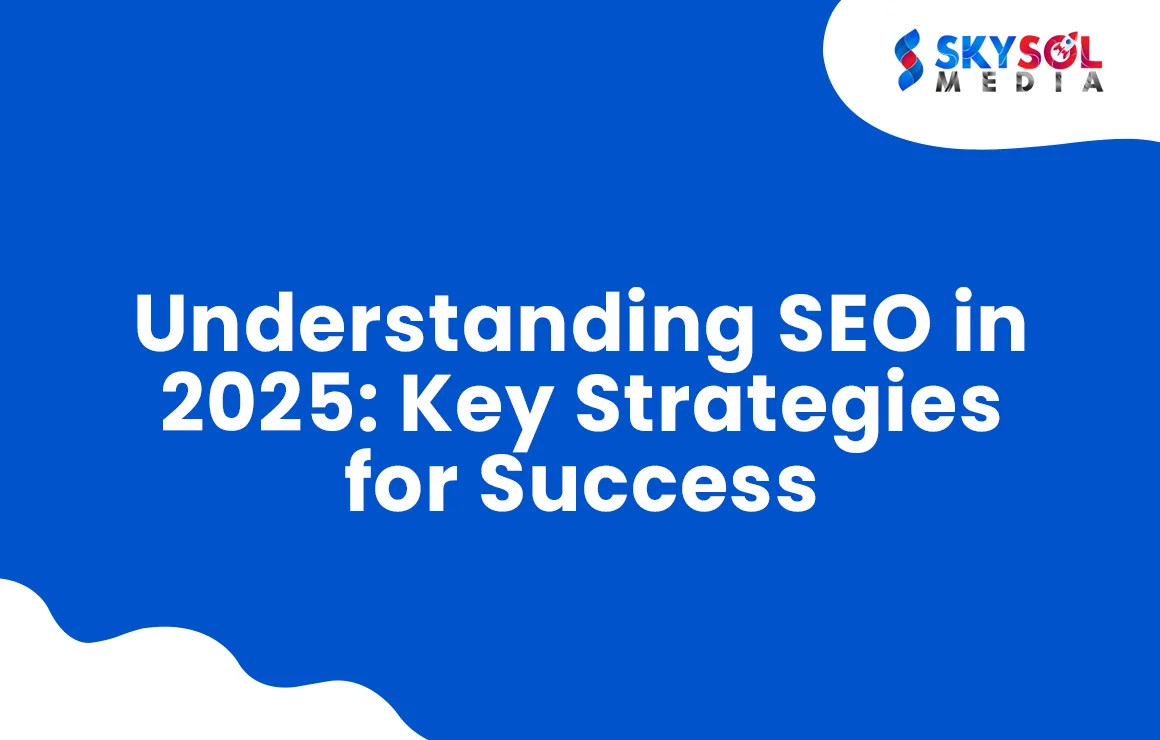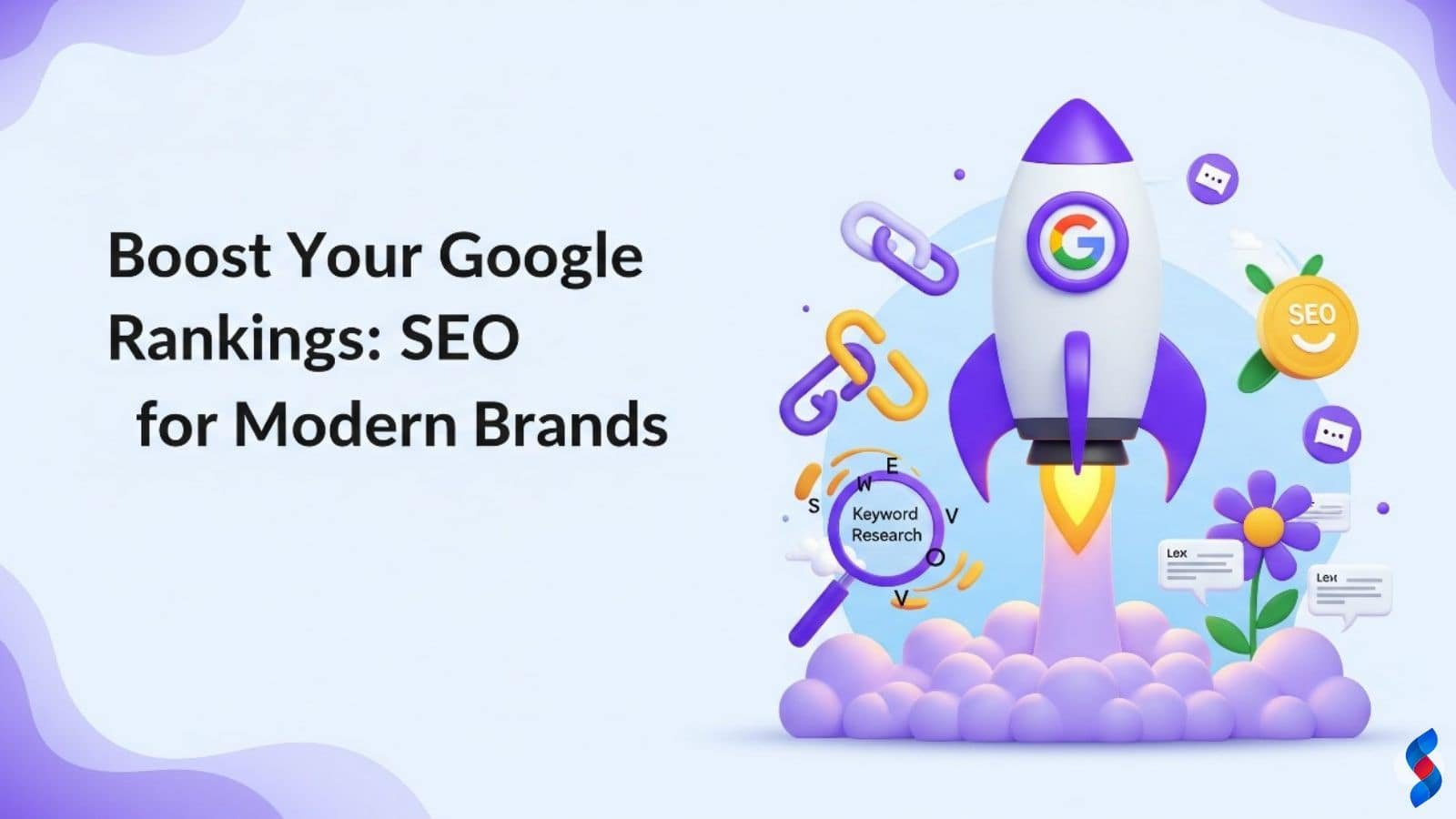Need help? Call us:
+92 320 1516 585
- Web Design And Development
- Graphic Designing
- Search Engine Optimization
- Web Hosting
- Digital Marketing
- CRO Services
- Brand Development
- Social Media Marketing
- PPC Marketing
- Content Marketing
- ERP Solutions
- App Development
- Game Development
- Printing Services
- Video Production
- Artificial Intelligence
- Data Entry
- Theme And Plugin Development
- Product Photography
- Software Development
- App Development
- Artificial Intelligence
- Brand Development
- Content Marketing
- CRO Services
- Custom Theme And Plugin Development
- Data Entry
- Digital Marketing
- ERP Solutions
- Game Development
- Graphics Designing
- PPC Marketing
- Printing Services
- Product Photography
- SEO
- Social Media Marketing
- Software Development
- Unique Category
- Video Production
- Web Design & Development
- Web Hosting
WordPress SEO Wins: 7 Amazing Ways to Boost Your Rankings in 2025
In the ever-evolving landscape of digital marketing, achieving top rankings on search engines is crucial for online success. For WordPress users, implementing effective WordPress SEO…
In the ever-evolving landscape of digital marketing, achieving top rankings on search engines is crucial for online success. For WordPress users, implementing effective WordPress SEO wins strategies is essential to boost visibility and drive organic traffic. In this article, we’ll explore 7 amazing ways you can enhance your SEO for WordPress and dominate search engine results pages (SERPs) in 2025. By implementing these actionable strategies, you can significantly improve your WordPress ranking and achieve your online goals.
1. Optimize Your Permalinks for SEO Wins
1.1. Understanding Permalinks
- What are permalinks and why are they important?
- How search engines use permalinks for indexing.
Permalinks, or permanent links, are the URLs of your website’s individual pages and posts. They play a crucial role in WordPress SEO optimization because they provide search engines with valuable information about the content of each page. A well-structured permalink not only improves readability for users but also helps search engines understand the context of your content, making it easier to index and rank. For many of our clients here in Lahore, we’ve seen that a simple change in permalink structure led to an immediate, positive effect on crawl rate.
1.2. Setting Up SEO-Friendly Permalinks
- Navigating to the permalink settings in WordPress.
- Choosing the “Post name” structure.
- Why “Post name” is the most SEO-friendly option.
To set up SEO-friendly permalinks in WordPress, navigate to “Settings” and then “Permalinks” in your WordPress dashboard. The “Post name” structure is generally considered the most SEO-friendly option because it includes the title of your post in the URL. This provides a clear indication of the page’s content, allowing search engines like Google to quickly understand what the page is about. We advise all our clients to use this setting because it leads to the best WordPress SEO wins.
[IMAGE: Screenshot of WordPress permalink settings page with the “Post name” option selected]
1.3. Customizing Permalinks for Individual Posts
- Editing the URL slug when creating a new post.
- Using keywords in your URL slugs.
- Keeping URL slugs short and descriptive.
You can further optimize your permalinks by customizing the URL slug for individual posts. When creating a new post, edit the URL slug to include relevant keywords that accurately reflect the content of the page. It’s important to keep URL slugs short and descriptive, making them easy for both users and search engines to understand. Remember, a concise and keyword-rich URL slug can significantly contribute to your overall WordPress SEO strategy.
2. Leverage a Powerful WordPress SEO Plugin
2.1. Introduction to WordPress SEO Plugins
- Overview of popular plugins like Yoast SEO and Rank Math.
- Why a plugin is essential for managing on-page SEO.
WordPress SEO plugin options, such as Yoast SEO and Rank Math, are indispensable tools for managing on-page SEO. These plugins offer a range of features designed to optimize your content, improve readability, and enhance your website’s overall SEO performance. They simplify complex tasks, such as managing meta descriptions, analyzing keyword density, and generating XML sitemaps, making it easier for you to achieve WordPress SEO wins.
Expert Quote: “Implementing a robust WordPress SEO plugin is the foundation of any successful SEO strategy. It provides the necessary tools and insights to optimize your content effectively.” – Sarah Jones, SEO Consultant
2.2. Configuring Your Plugin Settings
- Setting up basic settings like site verification.
- Managing title tags and meta descriptions.
Once you’ve installed your chosen plugin, it’s crucial to configure its settings correctly. Start by setting up basic settings like site verification with Google Search Console. Next, manage your title tags and meta descriptions to ensure they are optimized for relevant keywords. A well-crafted title tag and meta description can significantly improve your click-through rates (CTR) from search engine results pages, ultimately driving more WordPress website traffic.
2.3. Using the Plugin to Optimize Individual Pages
- Analyzing content with the plugin’s on-page analysis tool.
- Improving readability and keyword density.
- Fixing schema markup for better search result snippets.
One of the most valuable features of Yoast SEO and Rank Math is their on-page analysis tool. This tool analyzes your content in real-time, providing suggestions for improving readability, keyword density, and overall SEO performance. By following these recommendations, you can optimize your content to rank higher in search results. Additionally, these plugins help you implement schema markup, which enhances your search result snippets and attracts more qualified traffic. This approach can help you improve SEO.
3. Master Keyword Research for WordPress Success
3.1. The Importance of Keyword Research
- Why understanding keywords is critical for SEO.
- How to identify the right keywords for your target audience.
Keyword research is the cornerstone of any successful WordPress SEO strategy. Understanding which keywords your target audience is searching for allows you to create content that aligns with their needs and interests. By targeting the right keywords, you can attract more qualified traffic to your website and increase your chances of achieving WordPress SEO wins.
3.2. Using Keyword Research Tools
- Introduction to tools like Google Keyword Planner, Ahrefs, and SEMrush.
- Finding long-tail keywords for specific niches.
Several keyword research tools can help you identify valuable keywords for your niche. Google Keyword Planner is a free tool that provides insights into keyword search volumes and competition levels. Ahrefs and SEMrush are more advanced tools that offer a wider range of features, including competitor analysis and keyword tracking. Focusing on long-tail keywords (longer, more specific phrases) can help you target niche audiences and improve your WordPress ranking for those specific searches. We always suggest that clients invest in one of these more advanced tools to realize the full benefits of WordPress SEO optimization.
3.3. Integrating Keywords into Your Content
- Placing keywords naturally in titles, headings, and body text.
- Avoiding keyword stuffing.
Once you’ve identified your target keywords, it’s crucial to integrate them naturally into your content. Place keywords in your titles, headings, and body text, ensuring they fit seamlessly into the overall flow of your writing. Avoid keyword stuffing, as this can negatively impact your SEO and user experience. The goal is to provide valuable content that incorporates keywords naturally, making it both informative and SEO-friendly, leading to WordPress SEO wins.
4. Optimize Images for Search Engines
4.1. Why Image Optimization Matters
- How images impact page load speed.
- The role of images in search engine ranking.
Image optimization is an often overlooked aspect of SEO for WordPress, but it plays a significant role in improving your website’s performance. Large, unoptimized images can slow down your page load speed, which negatively impacts user experience and search engine rankings. Additionally, optimized images can rank in Google Images, driving additional traffic to your website.
4.2. Compressing Images for Faster Loading
- Using image compression plugins like Smush or Imagify.
- Choosing the right image format (JPEG, PNG, WebP).
To compress your images, consider using image compression plugins like Smush or Imagify. These plugins automatically optimize your images without sacrificing quality, reducing their file size and improving page load speed. When saving images, choose the right format based on the image type. JPEGs are best for photographs, PNGs are ideal for graphics with transparency, and WebP is a modern format that offers superior compression and quality. Our team in Dubai has seen great success using the WebP format.
[IMAGE: Comparison of image file sizes before and after compression using Smush plugin]
4.3. Using Alt Text and Captions Effectively
- Writing descriptive alt text that includes keywords.
- Creating engaging captions that complement the image.
Alt text (alternative text) is a crucial element of image optimization. Write descriptive alt text that accurately describes the image and includes relevant keywords. This helps search engines understand the content of the image and its relevance to the page. Additionally, create engaging captions that complement the image and provide additional context for your readers.
5. Improve Website Speed for Better Rankings
5.1. Website Speed as a Ranking Factor
- The impact of slow loading times on user experience.
- How Google prioritizes fast-loading websites.
Website speed is a critical ranking factor for Google. Slow loading times can lead to a poor user experience, increased bounce rates, and lower search engine rankings. Google prioritizes fast-loading websites because they provide a better experience for users. Optimizing your website speed is essential for achieving WordPress SEO wins and attracting more organic traffic.
5.2. Using Caching Plugins
- Benefits of caching and how it improves speed.
- Popular caching plugins like WP Rocket or W3 Total Cache.
Caching plugins can significantly improve your website speed by storing static versions of your pages, reducing the load on your server. Popular caching plugins like WP Rocket and W3 Total Cache offer a range of features designed to optimize your website’s performance. By implementing caching, you can drastically reduce your page load times and improve user experience.
5.3. Minimizing HTTP Requests
- Reducing the number of elements on your page.
- Combining CSS and JavaScript files.
- Leveraging browser caching.
Minimizing HTTP requests is another effective way to improve website speed. Reduce the number of elements on your page, such as images, CSS files, and JavaScript files. Combine CSS and JavaScript files to reduce the number of requests. Leverage browser caching to store static assets locally on users’ devices, further reducing load times.
6. Build High-Quality Content for SEO
6.1. Content is King: Creating Valuable Resources
- Why high-quality content is essential for SEO.
- Focusing on providing value to your audience.
High-quality content is the foundation of any successful WordPress SEO strategy. Google prioritizes websites that provide valuable, informative, and engaging content to their users. By focusing on creating high-quality resources, you can attract more organic traffic, improve your search engine rankings, and establish yourself as an authority in your niche.
6.2. Optimizing Content for Readability
- Using headings, subheadings, and bullet points.
- Writing in a clear and concise style.
To optimize your content for readability, use headings, subheadings, and bullet points to break up large blocks of text. Write in a clear and concise style, avoiding jargon and complex language. Use short paragraphs and sentences to make your content easy to scan and digest. Readable content not only improves user experience but also helps search engines understand the structure and context of your pages.
Top 3 Ways to Achieve WordPress SEO Wins:
1. High-Quality Content
2. Keyword Research
3. Mobile Optimization
6.3. Updating Content Regularly
- Keeping your content fresh and relevant.
- The benefits of updating older posts.
Regularly updating your content is crucial for maintaining its relevance and value. Google favors websites that keep their content fresh and up-to-date. Update older posts with new information, statistics, and insights to keep them relevant and engaging. This not only improves your search engine rankings but also provides added value to your readers.
7. Mobile-Optimize Your WordPress Site
7.1. Mobile-First Indexing
- Why Google prioritizes mobile-friendly websites.
- Testing your site’s mobile responsiveness.
Google has shifted to mobile-first indexing, meaning it primarily uses the mobile version of your website for indexing and ranking. This underscores the importance of mobile optimization for WordPress SEO wins. Ensure your website is mobile-friendly and provides a seamless experience for users on all devices. Test your site’s mobile responsiveness using Google’s Mobile-Friendly Test tool.
7.2. Choosing a Responsive Theme
- Ensuring your theme is optimized for mobile devices.
- Testing your theme’s responsiveness on different devices.
Choose a responsive WordPress theme that is optimized for mobile devices. A responsive theme automatically adjusts its layout and design to fit different screen sizes, providing a consistent user experience across all devices. Test your theme’s responsiveness on various devices, including smartphones and tablets, to ensure it looks and functions correctly.
7.3. Speed Optimization for Mobile
- Compressing images for mobile users.
- Using Accelerated Mobile Pages (AMP) if necessary.
Speed optimization is particularly important for mobile users, who often have slower internet connections. Compress images specifically for mobile users to reduce file sizes and improve page load speed. Consider using Accelerated Mobile Pages (AMP) if necessary, which provides a streamlined, mobile-optimized version of your content.
8. Internal Linking Strategy for SEO
8.1. The Power of Internal Links
- How internal links help search engines crawl your site.
- Improving user navigation with internal links.
Internal links are links that connect one page of your website to another. They are crucial for WordPress SEO wins because they help search engines crawl your site more efficiently, understand the relationship between different pages, and distribute ranking power (link equity) throughout your website. Additionally, internal links improve user navigation, making it easier for visitors to find relevant content on your site.
8.2. Implementing an Internal Linking Plan
- Identifying relevant pages to link to.
- Using anchor text effectively.
To implement an effective internal linking plan, identify relevant pages on your website that you can link to from each piece of content. Use descriptive anchor text (the clickable text of the link) that accurately reflects the content of the linked page. Avoid using generic anchor text like “click here” or “read more.” Instead, use keywords that are relevant to the linked page.
8.3. Auditing Your Internal Links
- Checking for broken internal links.
- Ensuring all pages are properly linked.
Regularly audit your internal links to ensure they are functioning correctly and that all pages on your website are properly linked. Check for broken internal links, which can negatively impact user experience and SEO. Use a tool like Google Search Console or a WordPress SEO plugin to identify and fix broken links.
9. Implement Schema Markup for Rich Snippets
9.1. Understanding Schema Markup
- What is schema markup and why is it important?
- Types of schema markup (e.g., article, product, review).
Schema markup is structured data that you can add to your website’s HTML to provide search engines with more information about the content of your pages. It’s an important tool for WordPress SEO optimization. This helps search engines understand the context of your content and display rich snippets in search results, such as star ratings, product prices, and event dates. Rich snippets can significantly improve your click-through rates (CTR) and attract more qualified traffic to your website.
9.2. Adding Schema to Your WordPress Site
- Using plugins to implement schema markup easily.
- Testing your schema markup with Google’s Rich Results Test.
Several WordPress plugins make it easy to implement schema markup on your website. Plugins like Yoast SEO and Rank Math offer built-in schema markup features that allow you to add structured data to your pages without writing any code. After implementing schema markup, test it using Google’s Rich Results Test tool to ensure it is implemented correctly and that your rich snippets are displaying properly.
9.3. Enhancing Search Results with Rich Snippets
- Improving click-through rates with rich snippets.
- Attracting more qualified traffic to your website.
Rich snippets can significantly enhance your search results by providing users with more information about your content. This can lead to higher click-through rates, as users are more likely to click on results that are informative and visually appealing. By attracting more qualified traffic to your website, rich snippets can help you achieve WordPress SEO wins and improve your overall SEO performance.
10. Monitor Your SEO Progress with Analytics
10.1. Setting Up Google Analytics and Search Console
- Connecting your WordPress site to Google Analytics.
- Verifying your site with Google Search Console.
Monitoring your SEO progress is essential for understanding the effectiveness of your WordPress SEO strategy. Set up Google Analytics and Google Search Console to track key metrics, such as organic traffic, keyword rankings, and bounce rate. Connect your WordPress site to Google Analytics to track user behavior and gain insights into how visitors are interacting with your content. Verify your site with Google Search Console to monitor your website’s performance in search results and identify any technical issues.
10.2. Tracking Key SEO Metrics
- Monitoring organic traffic, keyword rankings, and bounce rate.
- Analyzing user behavior to improve SEO.
Track key SEO metrics, such as organic traffic, keyword rankings, and bounce rate, to measure the success of your SEO efforts. Monitor your organic traffic to see how many visitors are coming to your website from search engines. Track your keyword rankings to see how your website is ranking for your target keywords. Analyze your bounce rate to identify pages with poor user engagement and opportunities for improvement.
10.3. Using Data to Refine Your SEO Strategy
- Identifying areas for improvement based on analytics data.
- Making data-driven decisions to boost rankings.
Use the data you collect from Google Analytics and Search Console to refine your SEO for WordPress strategy. Identify areas for improvement based on your analytics data, such as pages with low organic traffic or high bounce rates. Make data-driven decisions to optimize your content, improve user experience, and boost your search engine rankings. Remember that SEO is an ongoing process, and continuous monitoring and refinement are essential for achieving long-term success.
Conclusion
In conclusion, achieving WordPress SEO wins in 2025 requires a comprehensive and strategic approach. By optimizing your permalinks, leveraging powerful SEO plugins, mastering keyword research, optimizing images, improving website speed, building high-quality content, mobile-optimizing your site, implementing an effective internal linking strategy, adding schema markup, and monitoring your progress with analytics, you can significantly improve your website’s visibility and drive organic traffic. These actionable strategies will help you enhance your WordPress ranking and dominate search engine results pages. We’re confident that by implementing these strategies, you’ll see a noticeable improvement in your WordPress SEO performance, so let’s get started today.
FAQ Section
Q: What is the most important factor for WordPress SEO?
A: While many factors contribute to successful WordPress SEO, creating high-quality, valuable content is paramount. Content that resonates with your target audience and provides genuine value is more likely to attract organic traffic, improve engagement, and earn higher rankings in search results.
Q: How often should I update my WordPress website’s content for SEO?
A: It’s recommended to update your content regularly, ideally at least once a month. Updating older posts with new information, statistics, and insights can help keep your content fresh and relevant, which can improve your search engine rankings.
Q: Which WordPress SEO plugin is the best?
A: Popular options include Yoast SEO and Rank Math. Both offer a range of features designed to optimize your content, improve readability, and enhance your website’s overall SEO performance. The best plugin for you will depend on your specific needs and preferences.
Q: How can I improve my website’s speed for better WordPress SEO wins?
A: To improve your website’s speed, you can use caching plugins like WP Rocket or W3 Total Cache, compress images using plugins like Smush or Imagify, minimize HTTP requests by combining CSS and JavaScript files, and leverage browser caching.
Q: Why is mobile optimization important for WordPress SEO?
A: Google has shifted to mobile-first indexing, meaning it primarily uses the mobile version of your website for indexing and ranking. Ensuring your website is mobile-friendly and provides a seamless experience for users on all devices is essential for achieving WordPress SEO wins and attracting more organic traffic.
Don’t forget to share it
Table of Contents

We’ll Design & Develop a Professional Website Tailored to Your Brand
Enjoy this post? Join our newsletter
Newsletter
Related Articles
The Ultimate SEO Guide for Growing Your Trading Business Online
Drive More Organic Traffic to Your Trading Platform with These Proven Tactics
Optimized for Success: How SkySol Media Builds SEO-First Websites
Boost Your Google Rankings: Proven SEO Tactics for Modern Brands
How to Write SEO-Friendly Blog Posts That Google Loves
This website uses cookies to improve your experience.
By using this website you agree to our Privacy Policy.






